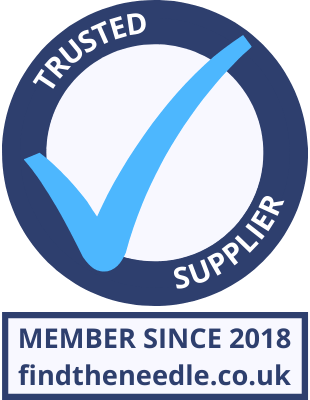 Add My Company
Add My Company
Sign In
How Do Cleanrooms Work?
07-06-2022

Many industries rely on the unique environments that only a cleanroom can provide. The combination of possible contamination and uncontrolled static build-up is a genuine problem for many delicate manufacturing and testing processes. For example, cleanrooms are an essential part of most electronic manufacturing because of the static control it provides. But how do cleanrooms manage to achieve this protection?
What Is A Cleanroom?
Cleanrooms are essentially rooms that have highly controlled environments, perfect for investigating or developing objects that are sensitive to change.
Due to the benefits of having a controlled space, you can find clean rooms in many different sectors, such as electronics manufacturing, pharmaceuticals, aerospace and military. These types of rooms are the most sought after for manufacturing and scientific research.
The primary way that these cleanrooms are controlled is through the air filters attached to the room’s air circulation. A high-efficiency particulate air filter (or HEPA) is attached to these areas where it can catch particles at 0.3 microns (a micron is one-millionth of a meter, and a human blood cell is 5 microns wide).
The Anatomy of a Cleanroom
Most people like to summarise a cleanroom down to a place with no contamination, but this isn’t accurate. Instead, a cleanroom will have a controlled level of contamination, a chosen amount specified by a certain number of particles per cubic meter and with a specific particle size. For example, the air we breathe will contain 35,000,000 particles per cubic meter at 0.5 microns or larger; an IsO 9 cleanroom standard would consider this the lowest level.
Cleanroom classifications are letter and number combinations determined by how clean the air is maintained inside the cleanroom. ISO classifications are essential for people to understand the capabilities of the cleanroom so that they can choose the fitting room for their planned work.
ISO Classifications go in descending order, with ISO 1 being the cleanest room with the most negligible contamination and ISO 9 being the most contaminated cleanroom (one step below a standard room). For ISO 1 rooms, Ultra Low Particulate Air (ULPA) filters are used for even more stringent cleanliness measures.
Whilst each cleanroom will be customised to suit the work proceeding inside it, specific tool requirements will cover most clean rooms. However, all components and tools within a cleanroom must be non-shedding and have a cleanable, non-porous surface. Anti-static products are pretty standard in cleanrooms to prevent harmful ESD from damaging any delicate machines or affecting anything tested inside. Our Ioniser-Pro Contamination Control Mats are a great example of a product that meets those requirements whilst also providing the essential ESD protection you need in a cleanroom.
Applications That Need Cleanrooms
Many different industries require cleanrooms, such as the previously mentioned industries. For example, medical instrument manufacturing and packaging need to be protected from contamination. Delicate electronics such as smartphone manufacture require protection through static control as uncontrolled static will create ESD that will harm the workers and ruin the components being made. Food preparation, NASA and some military applications also require these carefully controlled spaces.
Different Types Of Cleanroom
Despite what is shown in Hollywood movies, there isn’t just a single cleanroom design. Instead, because of the exacting work within cleanrooms, there are several designs to suit these varying tasks.
Monobloc panel cleanrooms are flush with the existing walls of the building. This type of room is what most people expect when they imagine a cleanroom. In addition, these rooms will cover ISO 3-9. With such a variety, you’ll find these rooms in use by every industry mentioned earlier, including pharmaceuticals and electronics.
Hardwall cleanrooms are a modular construction mounted on coated steel. These can range from ISO 5-to 8. The benefits of this type of room are that it can be built within an existing space, allowing external observation without contamination.
Softwall cleanrooms are the most economical choice for a cleanroom. These are also modular but are made from transparent flexible panels mounted to a strong frame. These cleanrooms are mainly used for emergencies because of their pop up ability.
Cleaning In Cleanrooms
Cleanrooms are tested many times in order to maintain their ISO classification. They are tested once they’ve been built, in between uses and at regular intervals during use to ensure no unexpected contamination occurs.
Air circulation is vital for cleaning the air in cleanrooms. ISO classifications also dictate the amount of air that needs to be circulated. In general, the amount of air cycled should be twice as much as the above classification (for example, for an ISO 4 Room, it should be double the circulation of an ISO 3 room). The higher the ISO number means more filters are required, more space and larger air conditioning units.
Anti-Static Products for Cleanrooms
At Ioniser Pro, our team are experts at providing the essential anti-static products necessary for keeping a static-free cleanroom. We can provide your room with highly effective Ioniser-Pro Blow units that can consistently clean the air of any harmful static build-up. Additionally, we can provide valuable accessories such as heel straps and wrist straps that can be worn to reduce any ESD shocks.
If you are interested in investing in our professional static control products, please browse our selection of recommended products for cleanrooms and learn more about how we can help your next project.
For more information on How Do Cleanrooms Work? talk to Ioniser Pro
Enquire Now
List your company on FindTheNeedle.

